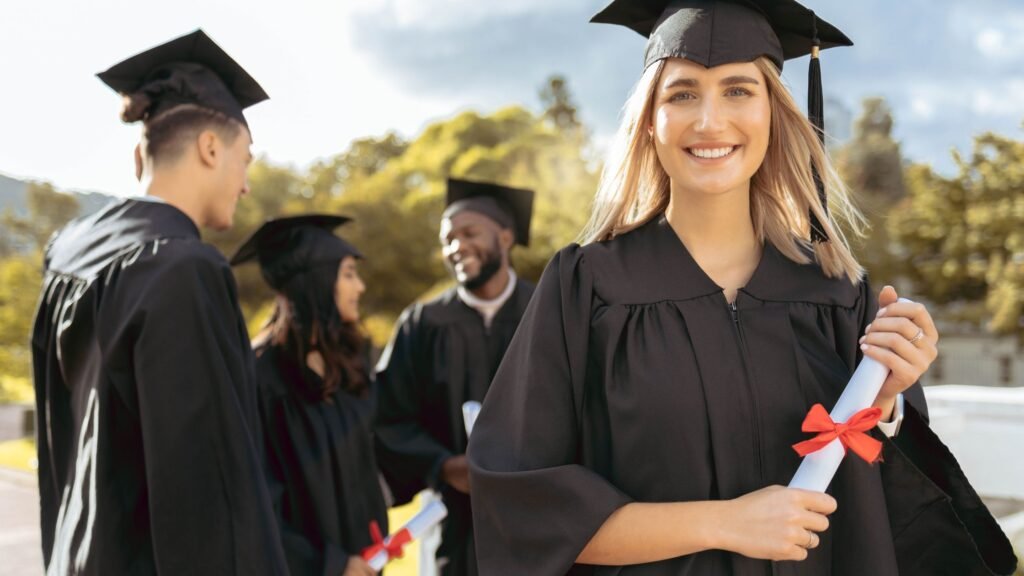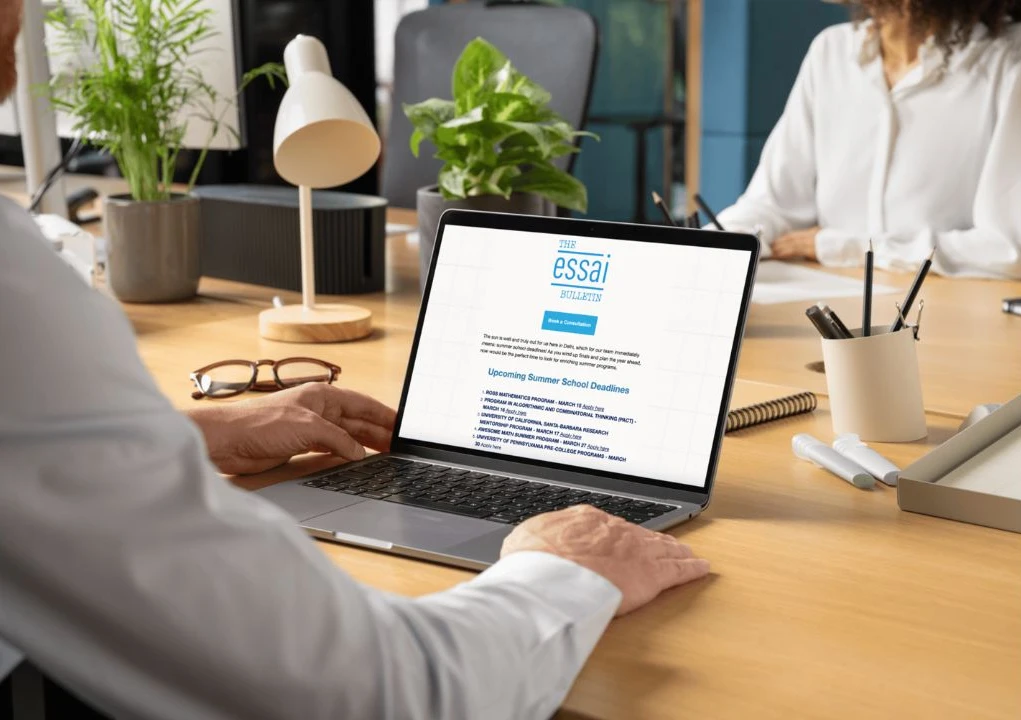When admissions officers at Harvard, Yale, Princeton, and the rest review applications, they look for signals that a student has already excelled on a national stage.
Below are six little-known yet highly respected competitions Ivy League committees track closely, and why earning distinction in any of them can move your file from “reader recommended” to “committee must-discuss.”
In today’s hyper-competitive admissions landscape, academic excellence and strong test scores are no longer enough. With admit rates dipping below 5% at top Ivy League schools, committees are searching for students who have demonstrated initiative, leadership, and mastery beyond the classroom.
They identify exceptional candidates by scanning applications for specific prestigious and often overlooked competitions. These are not your everyday essay contests or school-level awards. Instead, they represent the pinnacle of achievement in science, the humanities, the arts, and civic leadership, often judged by experts in the field.
What makes these competitions truly valuable to Ivy League reviewers is that they are meritocratic, transparent, and incredibly selective, similar to the colleges themselves.
Winning or even placing in these events signals a student can thrive in the rigorous, self-directed learning environments that define elite education. Your application may already speak volumes if you’ve participated in the following.
1. Regeneron Science Talent Search (STS)

What it is
Often called “the junior Nobel,” STS asks high-school researchers to design and defend original science projects rooted in independent inquiry.
Sponsored by the Society for Science, this competition has a legacy dating back to 1942 and remains one of the most prestigious research contests for high school seniors in the United States.
In 2025, Pasadena senior Matteo Paz won the $250,000 top prize for building a machine-learning model that sifted through 200 TB of NASA data to discover 1.9 million new infrared variable objects. This achievement not only demonstrated deep technical acumen but also contributed meaningful knowledge to astrophysics.
Why Ivy League committees care
► Only 40 finalists are chosen nationwide, fewer than the total number of U.S. Rhodes Scholars each year.
► Alumni include eight Nobel laureates and 13 MacArthur “Genius” Fellows, a yield rate that admissions officers take seriously.
► STS research proves that a student can handle graduate-level inquiry before freshman year.
► Ivy League faculty are often familiar with STS and may even sit on review boards, adding weight to finalists and semifinalists.
Real-time edge
The 2025 top-ten list featured projects on gene-therapy modeling, renewable battery chemistry, and cutting-edge hypergraph theory fields that align with faculty research at the Ivy League’s biggest STEM labs. These are not theoretical assignments for grades but published-level inquiries with real-world relevance.
For instance, a 2024 finalist went on to co-author a paper with MIT scientists before setting foot on a college campus.
How to stand out
Submit work that solves a real problem and be prepared to defend each data point. Judges grill finalists for 90 minutes, just like a doctoral defense.
Clarity, originality, and statistical rigor are critical. Many applicants partner with universities or labs, but independent researchers have also made it to the finals with resourcefulness and a compelling research question.
2. Junior Science & Humanities Symposium (JSHS)
What it is
Sponsored by the U.S. Department of Defense and administered by the National Science Teaching Association, JSHS is among the most competitive STEM research competitions for high school students in the United States.
The program operates through 49 regional symposia, each selecting five top student researchers to advance nationally. In April 2025, 239 finalists gathered in Albuquerque, New Mexico, to present original scientific research before a panel of academic and military experts, competing for $192,000 in scholarships.
The projects covered a wide spectrum, from AI-powered diagnostics for honey-bee colony collapse to novel propulsion algorithms for unmanned aerial vehicles.
Why Ivy League committees care
► JSHS winners prove they can communicate technical research in oral and poster formats—exactly the skill required for first-year seminars.
► The DOD sponsorship gives projects immediate credibility in defense technology, cybersecurity, environmental science, and public health.
► Finalists often publish abstracts in peer-reviewed conference proceedings, a publication credit uncommon among applicants.
► The symposium’s dual focus on innovation and presentation strongly indicates college-level research and communication readiness.
Real-time edge
Admissions readers note that 2025’s category winners hailed from 23 states, underscoring geographic diversity—another plus in holistic review.
The competition’s structure also fosters collaboration, leadership, and public speaking, traits Ivy League schools value deeply. In recent years, finalists have gone on to intern at government labs, collaborate with university research groups, and receive early attention from Ivy League faculty members in biology, engineering, and computer science departments.
How to stand out
Regional wins matter: 1 in 10 regional champions become national scholars. Focus on straightforward storytelling of methods and implications rather than raw data dumps.
Judges prioritize clarity, relevance, and the student’s ability to think critically about future applications of their work. Adding a social or environmental impact component can give your project an edge in competition and college applications.
3. The Concord Review (History Research Journal)
What it is
Founded in 1987 by historian Will Fitzhugh, The Concord Review (TCR) is the only quarterly journal that publishes full-length history research papers by secondary-school scholars worldwide.
Every issue features about eleven essays selected from 600+ annual submissions, bringing the acceptance rate down to roughly 5 – 7 percent, lower than many Ivy League admit rates.
Each published paper is 5 000–8 000 words, includes Chicago-style footnotes, original primary-source analysis, and a formal bibliography. Authors who make it into print become eligible for the journal’s Emerson Prize, an additional honor that recognizes the year’s most outstanding essays and is frequently cited in Ivy League application “Honors” sections. (tcr.org)
Why Ivy League committees care
► Documented research rigor. Publication in TCR certifies that a high-school student can wield the same archival and historiographical tools expected in upper-level college seminars, skills many first-years still lack.
► Institutional credibility. More than 30 selective institutions, including Harvard, Princeton, Yale, Columbia, Dartmouth, Penn, Brown, and Cornell, officially endorse TCR’s National Writing Board, training admissions readers to view the journal as a gold-standard credential rather than just a high-school prize.
► Demonstrated intellectual stamina. Drafting, revising, and defending an 8,000-word argument over six to twelve months highlights perseverance, time management, and the ability to synthesize complex evidence, attributes directly to senior-thesis success rates on Ivy campuses.
► Predictive outcome data. TCR alumni have gone on to win Rhodes, Marshall, and Truman Scholarships at rates far exceeding national norms, giving admissions offices longitudinal proof that the journal effectively identifies future academic stars.
Real-time edge
Recent issues feature topics such as “Cold War Sino-Soviet Relations,” “Legal Pluralism in Mughal India,” “Economic Nationalism in Post-Depression Brazil,” and “Environmental Policy During the Carter Administration.”
These global and interdisciplinary themes mirror the current push within Ivy League history departments toward trans-national, comparative research, signaling to faculty reviewers that a prospective student is already fluent in the historiographic conversations dominating graduate-level colloquia.
How to stand out
- Original thesis first. Editors value a genuinely fresh argument over a well-written recap of familiar events; choose a niche angle or an underused archive.
- Primary sources matter. Deep dives into letters, court transcripts, or foreign-language newspapers carry more weight than secondary synthesis.
- Polish like a pro. Submissions undergo double-blind review by PhD-level historians. Meticulous citation formatting and a compelling abstract differentiate acceptance from a politely worded rejection.
- Contextualize the win. In your Common App Activities row, note the acceptance rate and word length to help admissions readers grasp the achievement at a glance.
Earn a byline in The Concord Review. You are not just another strong history student; you are a published scholar whose work already contributes to the broader academic discourse Ivy League professors inhabit daily.
4. Davidson Fellows Scholarship

What it is
A merit-based program that awards $ 50,000, $ 25,000, and $ 10,000 scholarships to students who create significant work in science, technology, engineering, math, literature, music, or “outside-the-box” categories.
The 2024 cohort included 23 Fellows, including $ 50,000 recipient Vidya Ambati for CRISPR-based malaria diagnostics and $ 25,000 recipient Michelle Wei for advanced combinatorial mathematics.
Why Ivy League committees care
► The scholarship is unrestricted; winners can fund research or startups, aligning with Ivy entrepreneurship ecosystems.
► Multidisciplinary categories let arts or humanities applicants stand shoulder-to-shoulder with STEM peers.
► Davidson Fellows present at a Capitol Hill reception, evidence of national policy relevance.
Real-time edge
Half of 2024 Fellows matriculated at Ivy League colleges; the rest chose MIT, Stanford, or Caltech, underscoring the program’s weight in elite admissions.
How to stand out
Projects must demonstrate “significant positive impact.” Pair quantitative results (publications, patents) with a compelling narrative of societal benefit.
5. U.S. Presidential Scholars in the Arts (via YoungArts)
What it is
YoungArts is the sole nominating body for the Presidential Scholars in the Arts, the nation’s highest honor for teen artists.
Students first submit digital portfolios or audition videos to YoungArts; from roughly 8,000 initial entries, about 700 earn merit recognition, 150–170 become Finalists, and only 20 ultimately receive the coveted White House medallion.
These scholars represent nine disciplines: classical music, jazz, voice, dance, theater, cinematic arts, design, visual arts, and writing, culminating in a week-long program that includes masterclasses with industry icons and a gala performance at the Kennedy Center.
(youngarts.org)
Why Ivy League committees care
► The White House Commission on Presidential Scholars vets candidates’ GPAs, rigor of coursework, essays, and leadership records; artistic excellence is therefore accompanied by proven academic strength.
► Winners perform at the Kennedy Center, an unequivocal prestige marker that raises a campus’s cultural profile when the scholar arrives.
► Recognition spans visual arts, music, writing, dance, theater, allowing non-STEM applicants to present a credential that admissions officers perceive as parallel in selectivity and difficulty to STS or JSHS-level honors.
► Scholars gain a lifelong professional network that often includes Ivy League professors in the arts, creating built-in mentorship pipelines.
Real-time edge
Several 2024 Scholars already headline campus a-capella groups, jazz combos, and student orchestra rosters at Brown, Columbia, and Yale, demonstrating immediate community contribution and leadership potential in campus arts organizations from day one.
How to stand out
Begin by securing at least a YoungArts Finalist award, which proves national-level talent.
Then, curate an artist statement that links your creative vision to broader social or academic themes, maintain a robust transcript, and pursue meaningful service (e.g., founding a free community arts workshop).
Excellence across portfolio, academics, and impact elevates one’s chances of White House nomination and captures the attention of Ivy League committees.
6. United States Senate Youth Program (USSYP)
What it is
Each year, two high school leaders from every state, D.C., and DoDEA school win a $10,000 scholarship and attend Washington Week to meet senators, Supreme Court justices, and cabinet officials.
The 63rd program will host 104 delegates in March 2025; selection begins at state education departments and includes a public-affairs exam and an in-person interview. ussenateyouth.orgawsp.org
Why Ivy League committees care
► Recipients show bipartisan civic engagement, a skillset prized in leadership pipelines at Princeton SPIA and Harvard Kennedy School.
► Delegates gain direct letters of recommendation from U.S. Senators, often appearing in the “Additional Support” section of Ivy League applications.
► The scholarship–plus–network combination predicts future Rhodes, Truman, and Marshall Scholar success, markers that admissions offices track longitudinally.
Real-time edge
2025 delegate rosters already include state student-body presidents spearheading environmental legislation—evidence of impact beyond school walls.
How to stand out
Hold an elected position representing a constituency (Student Council president, state board) and refine policy knowledge—half the selection score comes from a civics exam.
What Makes These Competitions Different?
| Common Factor | Why It Matters to Ivy League Committees |
|---|---|
| National jury with blind review | Removes hometown bias; signals objective excellence |
| Low acceptance rates (<7 %) | Mirrors Ivy selectivity; simplifies admissions risk calculation |
| Publicly verifiable results | Officers can cross-check press releases and rosters instantly |
| Skill-aligned to college work | Original research, peer review, policy debate, or professional performance translate directly to first-year expectations |
How to Leverage Your Achievement and Make Sure Admissions Notices It
- Contextualize the honor.
Don’t assume every reader knows the competition’s prestige. In the Activities section or a short Additional Information note, list the acceptance rate (“5 % of 2,000 entrants”) and the national or global scope (“one of 40 U.S. finalists”). A single parenthetical line—“Top-40 national finalist out of 49,000 STEM submissions”—gives reviewers instant scale and saves them a Google search. - Link it to future goals.
Draw a straight line from the accolade to resources on your target campus. If your STS machine-learning project predicts coral-reef bleaching, say how you plan to refine that model at Princeton’s Keller Center for Innovation. If Senate Youth sparked your passion for health-care policy, connect it to Penn’s Fels Institute practicum on Medicaid reform. This framing shows purpose, not bragging. - Secure third-party validation.
Recommendation letters carry extra weight when they come from competition mentors or external judges rather than school teachers alone. Ask them to detail how you navigated setbacks—rewriting code, revising archival citations, or coaching teammates—so the committee sees process, perseverance, and growth, not just the final ribbon. - Show ripple effects.
Quantify post-competition impact: “Davidson project scaled into a nonprofit, distributing 3,000 low-cost water-testing kits across rural Maharashtra.” Or, “Concord Review essay earned an invitation to present at the Chicago Field Museum’s youth symposium.” Concrete outcomes signal that your work lives beyond the trophy case. - Integrate the story across your application.
Weave the competition into essays and short answers without repetition: highlight discovery in the Personal Statement, teamwork in the Extracurricular essay, and technical depth in an optional research supplement. This layered approach lets each section reveal a new facet rather than echo the same bullet. - Avoid résumé dumping.
One gold-standard national honor outweighs a dozen minor certificates; let your application breathe. Curate no more than two or three flagship achievements, then spend your scarce word count illustrating insight, impact, and future trajectory. The goal is to leave admissions officers picturing you already thriving—and leading—on their campus.
Final Thoughts
Ivy League committees sift through tens of thousands of stellar transcripts every year. Standing out often refers to documented success in the handful of competitions they track most closely.
A semifinalist medal in the Regeneron Science Talent Search, a publication in The Concord Review, or a Kennedy Center performance as a U.S. Presidential Scholar in the Arts is more than a résumé line, it is independent, third-party evidence that you can already operate at the level of an undergraduate research fellow, policy debater, or conservatory musician.
But the credential alone is only half the battle. Admissions officers also read for reflection. They want to see that you can articulate why the experience mattered and how it changed how you learn, lead, and solve problems.
If sequencing genomes taught you to navigate inconclusive data, explain that insight in your supplemental essay on intellectual curiosity.
If debating foreign policy on Capitol Hill forced you to reconcile opposing viewpoints, describe how that will shape your participation in Princeton’s Bridge Year Program. Translating mastery into mindfulness shows maturity and foresight.
Remember that Ivy League campuses are communities, not prize museums. Depth outweighs breadth. Rather than scattering your energy across dozens of clubs, invest in the initiatives that naturally extend from your competition work, mentoring younger researchers, publishing a how-to series, or launching a community arts workshop.
Sustained impact over time signals that you will arrive on campus ready to contribute, not simply collect accolades.
Finally, treat each competition as a platform, not a pinnacle. Network with judges, collaborate with fellow finalists, and pursue follow-up projects that keep the momentum alive.
By doing so, your record becomes a narrative of curiosity, resilience, and service, qualities every Ivy League committee is eager to admit. Let your achievements open doors, then walk through them with purpose.
Frequently Asked Questions
- Does winning one of these competitions guarantee Ivy League admission? No, but historical data show finalists enjoy admission rates several times the overall average when grades and essays are consistent.
- Are international students eligible? Competitions such as STS, JSHS, and USSYP require U.S. citizenship or residency, but The Concord Review and Davidson Fellows accept global applicants.
- What if my school lacks research mentors? Programs like JSHS and Davidson allow independent work; virtual mentors and online labs have helped rural students win top awards.
- Is it too late if I’m already a senior? Many competitions have junior-year deadlines. If timelines are tight, focus on The Concord Review (rolling submissions) or YoungArts (early October).


